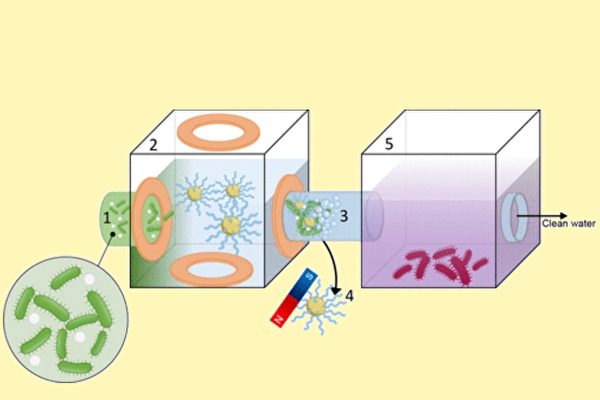Plastic dominates everyday household items, but it not only decomposes slowly, but it also easily breaks down into even more harmful plastic micro-particles, leading to widespread environmental and health problems. In response, European scientists have created a small robot to clean up these plastic micro-particles and bacteria.
Improper handling of food packaging, children’s toys, and other plastic products in our daily lives can cause them to break down into 5 millimeters (mm) or smaller plastic micro-particles. These particles can absorb heavy metals and release toxic chemicals, which can be easily absorbed by animals and plants.
When people consume these animals or plants, their bodies accumulate these substances. Many studies have shown that these plastic micro-particles can have negative effects on the human body, including on the digestive, respiratory, endocrine, reproductive, and immune systems, as well as interfere with hormone production, release, transmission, and metabolism. Additionally, some studies have found that plastic micro-particles attract bacteria and pathogens, which can be ingested by animals and humans.
While previous micro- or nano-scale robots could clean up trash or deliver drugs using nearby chemicals, light, magnetism, sound, and electricity, or perform more complex actions through computer programming, these micro-robots often require more money and time to manufacture, and may not always achieve the desired results.
This time, scientists from the Sino-European Institute of Future Energy and Innovation Laboratory and Brno University of Technology have developed a magnetic micro-robot that can clean up plastic micro-particles and microorganisms, which can be reused after cleaning. The research findings were published in the “Journal of the American Chemical Society” in May this year.
The lead author, Martin Pumera, and his colleagues integrated dimethylaminopropyl acrylamide cationic polymer onto 4-micrometer (μm) diameter micro-robots, enhancing their interaction with bacteria through electrostatic forces. This allowed the robots to grow “tentacles” made of magnetic core polymers, improving their capture efficiency.
The cationic polymer used this time is a promising drug for preventing and treating bacterial infections, as it can disrupt bacterial cell membranes to kill them, especially effective against gram-negative bacteria (such as E. coli). Increasing the electrostatic charge on this cationic polymer enhances its ability to bind (and disrupt) bacteria.
The researchers then placed the micro-robots in a container containing Pseudomonas aeruginosa and plastic micro-particles, manipulating them with a magnetic field to form chains, planes, clusters, and various other formations to capture bacteria and plastic micro-particles.
After capturing pollutants, the robots were guided to another clean container, where they were separated from bacteria or plastic micro-particles using ultrasound and then subjected to UV disinfection before releasing clean water.
Water samples were tested for bacterial content. The results showed a significant reduction in bacterial content after the water was operated on by the micro-robots for 30 minutes. They also found that the micro-robots could capture approximately 80% of bacteria in high-concentration bacterial solutions, but this rate dropped to 21% in low concentrations.
Furthermore, the magnetic micro-robots were placed in water contaminated with fluorescent polystyrene beads (simulating plastic micro-particles) with a diameter of about 1 μm and bacteria for 30 minutes to evaluate the robots’ ability to clean these pollutants. The results showed a significant reduction in Pseudomonas aeruginosa and plastic micro-particle residues, with longer treatment durations resulting in fewer residual pollutants.
The researchers stated that this experiment proves to be a solution for complex water purification, different from traditional methods because of its effectiveness and reusability. By improving the cationic polymer, it may be possible to capture other types of bacteria, making this a very promising method.

